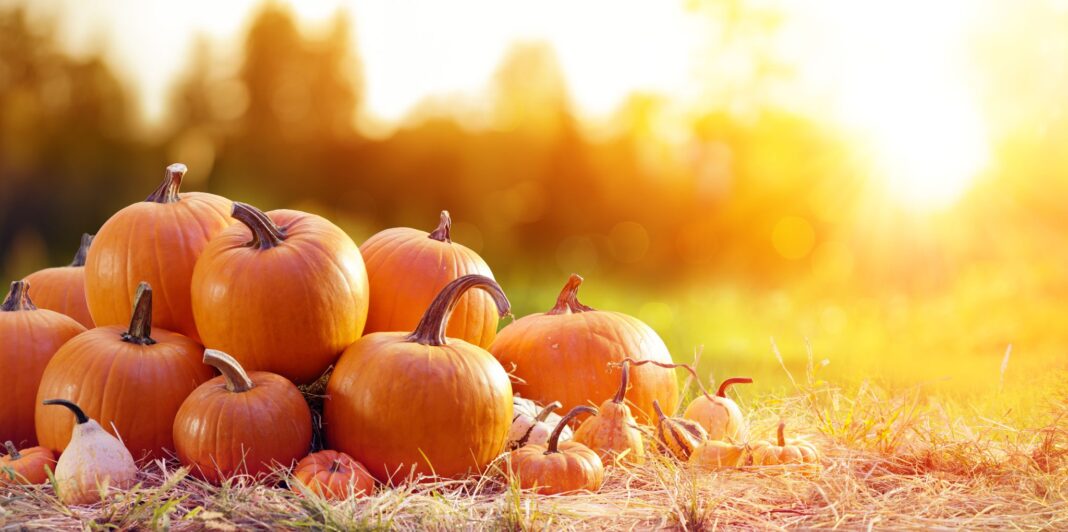Garden Thyme: Oh, My Gourd! It’s a Pumpkin!
Autumn is an amazing time of the year. The hot days of summer begin to give way to cooler temperatures; days become shorter and nights longer. Plants begin to fill the formerly green landscape with vibrant colors of yellow, orange, red and brown. Preparing for winter, chlorophyll production stops and many green leaves turn yellow and orange. Sugar becomes trapped in some leaves and they turn red. Plants absorb nutrients in leaves and they drop (fall) as waste material. Pine cones mature, drop seeds and fall to the ground.
As fall crops such as pumpkins, gourds and winter squash mature, the landscape is enhanced with new colors like rust, amber, and purple. Pumpkin Patches and Fall Festivals are everywhere and people enjoy decorating for the season.
What are Pumpkins, Gourds and Winter Squash?
Americans love pumpkins; 1.5 billion pounds of pumpkins were harvested in 2021. But what exactly is a pumpkin?
What is a pumpkin? What is a gourd? What is winter squash? Put on your thinking caps and hold onto your hats. It is complicated.
“Pumpkin” is not a scientific classification; it is a common term for certain types of winter squash. Pumpkins, gourds, and squash are all part of the Cucurbitaceae, also called the cucurbits or gourd family. So, a pumpkin is also technically a gourd.
Most people think of produce as fruits or vegetables based on whether or not it is sweet and how it is typically cooked or consumed. Since the flesh of pumpkins and squash are not sweet and many dishes prepared with them are not sweet they consider them vegetables. However, Joe Masabni, Ph.D., assistant professor for horticultural science and Texas A&M AgriLife Extension vegetable specialist states that “Botanically, anything that starts from a flower is considered a fruit”. Thus gourds, pumpkins, winter squash, strawberries and tomatoes are fruits.
To make it even more complicated, pumpkins, gourds and squash are also, botanically speaking, a type of berry called pepos. So, pumpkin is a winter squash, gourd, fruit and berry!
How Gourds are Different from Pumpkins
Gourds are hard (if they were soft, they would be a squash), have little food value, are difficult to cook and do not have a pleasant taste. They are typically used for decorations and useful items. Throughout the world, dried gourds have been grown and harvested for food, and used for thousands of years for decorative items such as storage containers, utensils, cups, bottles, scoops, ladles, fishnet floats, birdhouses, ornaments, rattles, and musical instruments. Discoveries and resulting carbon dating has shown that bottle gourds were present in the Americas 10,000 years ago and widespread by 8,000 years ago.
Pumpkins have softer skin than gourds. Scientists believe pumpkins originated in North America 9,000 years ago and were used by Native Americans.
- Decorating with Pumpkins
- Jack’O’Lanterns – To keep longer, store in a cool place..
- Paint and carve designs on pumpkins.
Use for flower arrangements. Remove enough on the inside of the pumpkin to allow for a vase to put the flowers into. This will keep the pumpkin from getting too wet inside.
- Make centerpieces with mini pumpkins.
- Place in the yard with other fall decorations.
- Pumpkins – a Heart-Healthy Fall Superfood
Pumpkins include an impressive amount of vitamins, minerals, fiber, antioxidants and protein. They can be made into a variety of foods including:
- Soups
- Casseroles
- Baked Goods – cakes, breads, cupcakes, pies
- Smoothies
- Jams and Jellies
Pumpkin Seeds can be purchased raw, sprouted or roasted; you can also roast your own. They have been used for thousands of years as a folk remedy to treat many conditions. Science now confirms that they have nutrients that have many health benefits. They are an excellent source of fiber, protein, antioxidants, unsaturated fatty acids, vitamins and minerals that help strengthen the immune system, regulate blood pressure and blood sugar and help with other chronic diseases, including cancer. Ways to eat them include:
- Add to smoothies.
- Mix into granola, yogurt or cereal.
- Add to salads.
- Add to cooked dishes.
- Bake in cookies and breads.
- Roast with seasoning for a snack.
Fun Pumpkin and Gourd Facts
The word “pumpkin” first appeared in the fairy tale Cinderella in the late 17th century.
Legends from Ireland, Scotland and England tell how Jack-o’-Lanterns started. One Legend tells of a bad man named “Stingy Jack” who tricked the Devil 2 times. When he died, he wasn’t allowed to enter heaven and the Devil refused to let him in but gave him a glowing coal to use in his turnip lantern as he roamed the earth. People carved lanterns to frighten away “Stingy Jack” if he came to their home.
The Irish, Scottish and English had been carving their lanterns out of potatoes and turnips. When they came to America they began to use pumpkins because they were easier to carve.
Each pumpkin has about 500 seeds.
A 1,000 year old gourd found in Kentucky proves they were used in the New World.
The heaviest pumpkin recorded in the United States weighed 2,560 pounds in October 2022.















